Karl Lenton designs egg-shaped movable therapy pods for prisons
Karl Lenton of UK company Safe Innovations has designed these mobile therapy spaces to give prisoners better and more comfortable access to healthcare.
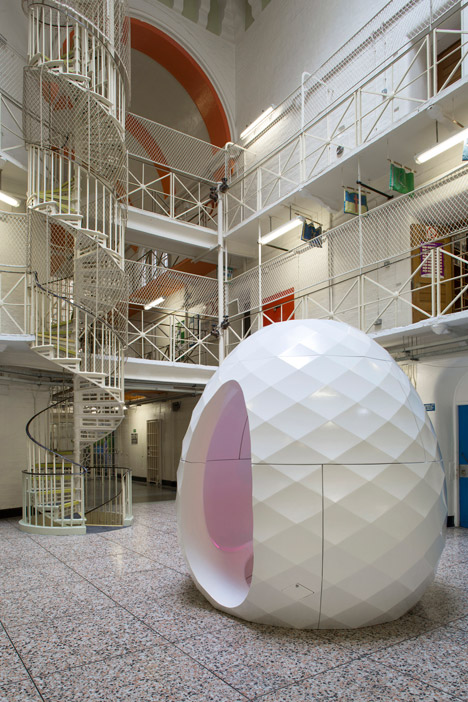
Designed for prisons across the UK, the 2.4-metre diameter Seeds pods are composed of glass-reinforced plastic (GRP), and break down into eight modular pieces that can be assembled in 30 minutes without screws or clips.
A pattern of tessellating diamonds covers the exterior of the white egg-shaped structures, which are entered through a door in one side and can be exited through an emergency route via a panel at the back.
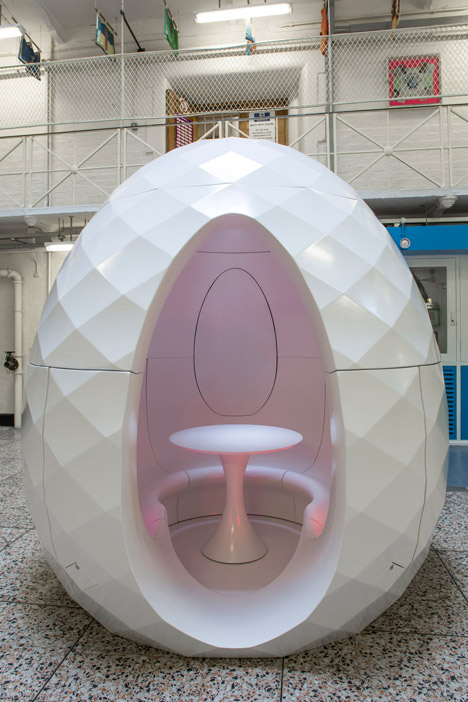
"There are lots of security issues that only apply to these environment," said Karl Lenton, creative director at Safe Innovations – which uses design to improve the environments of vulnerable individuals – and Burr Lenton Architecture. "Designing a space, for example, that has no ligature points, which could cause harm to its users."
"Prisons by their very nature are loud environments, made from materials that amplify sound. Seeds' inner foam core is used to dampen and mask these external sounds of prison life, so conversations can take place inside Seeds without people having to raise their voices to be heard."
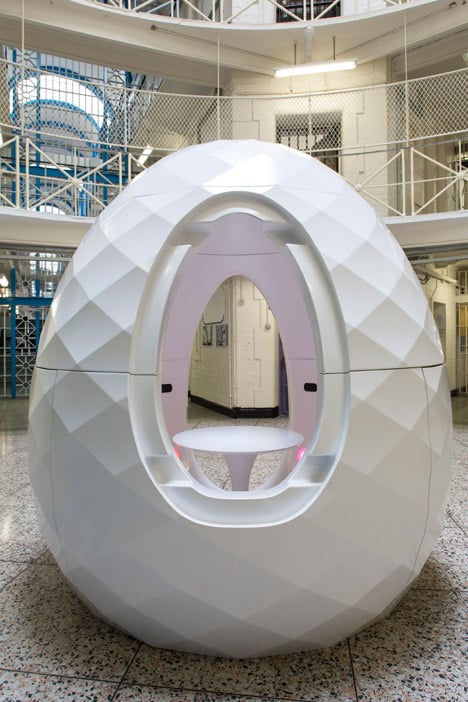
Inside the spaces house a central table, colour-changing lamps, speakers and touch screens, and can be used for one-on-one consultations or group meetings of up to four individuals.
"Seeds has been designed to support healthcare services to deliver healthcare to a greater number of patients," said Lenton. "Planting Seeds directly onto prison wings means more patients can be seen during the working day. This direct approach also has economic benefits to both healthcare providers and the Prison Service."
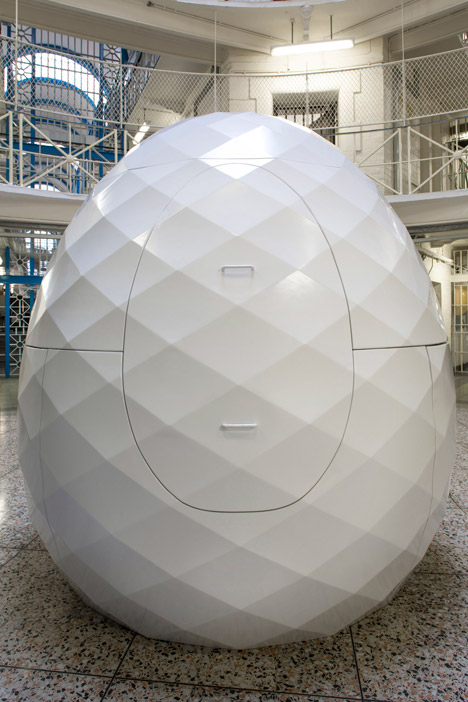
Lenton began developing Seeds for his final-year project while studying architecture at The Cass School of Art, Architecture and Design. He worked with both prisoners and staff to fine-tune the mobile environment, which can be transported and re-assembled around the prison as required.
The project was partially funded by the NHS, with the first Seed funded by Leeds Community Healthcare NHS Trust, Safe Offender Healthcare and Safe Innovations.
"Prisons are not nurturing places, they are forbidding from the outside, and grey and visually impoverished on the inside," said a recently published Seeds appraisal report.
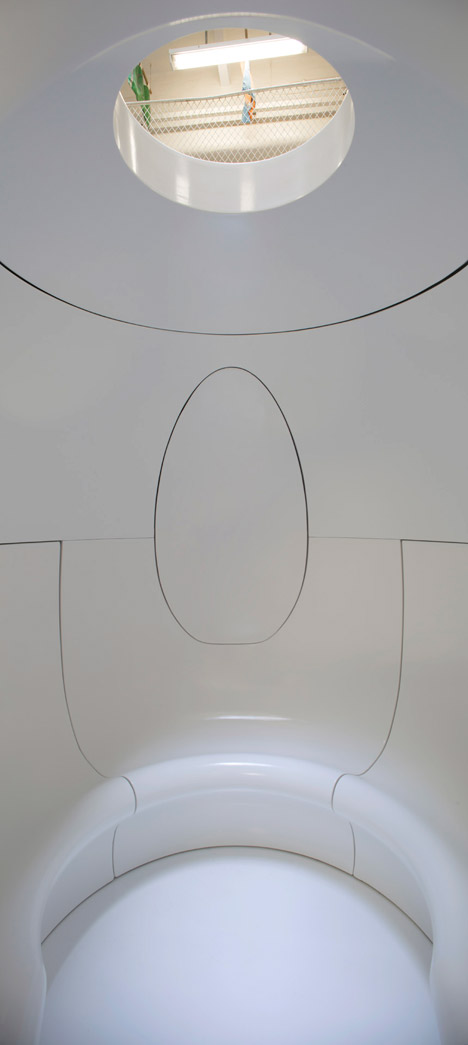
With many prisoners suffering from mental health disorders and other long-term conditions, the pods have been designed as a safe and engaging alternative space for them to receive essential healthcare services.
Leeds prison is the first institution to install the Seeds pods, as part of a collaboration with Leeds Community Healthcare NHS Trust, National Offender Management Service, Stage One Creative Services, the University of Leeds electrical engineering department, and with design development supported by Peter Shovlin.
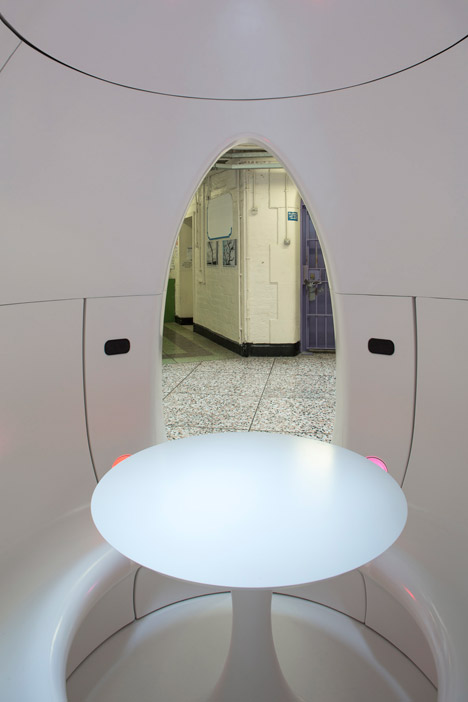
"We believe the mobility of Seeds will mean we are able to reach more patients and address some of the issues that are preventing prisoners from accessing healthcare," said Dawn Jessop, head of health and justice healthcare at LCH. "If this pilot goes well, we hope to roll Seeds out in other areas where we provide healthcare to prisoners and offenders."
Improving the design of correctional facilities is also a goal for Danish architecture studio CF Møller, which won a competition in 2011 with a proposal for a prison laid out like a small village, with various work and leisure facilities integrated alongside green spaces.
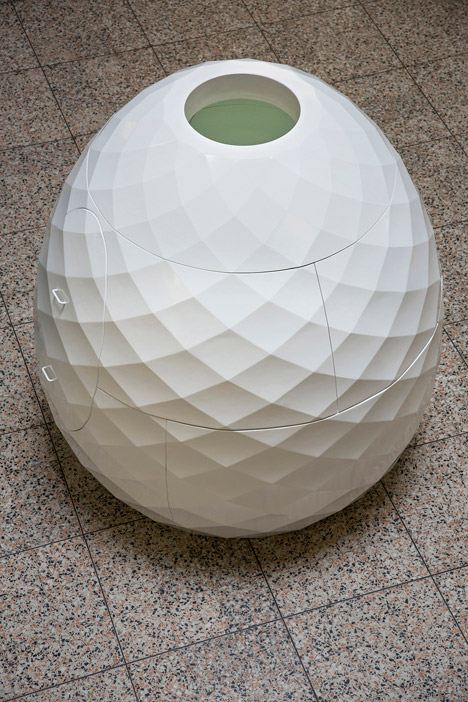
Outdoor spaces also feature at a penitentiary in Spain, which is composed of low-rise cell blocks surrounded by woodland.
On a smaller scale, a design student created a contemporary furniture set for jail cells in juvenile detention centres in the US.